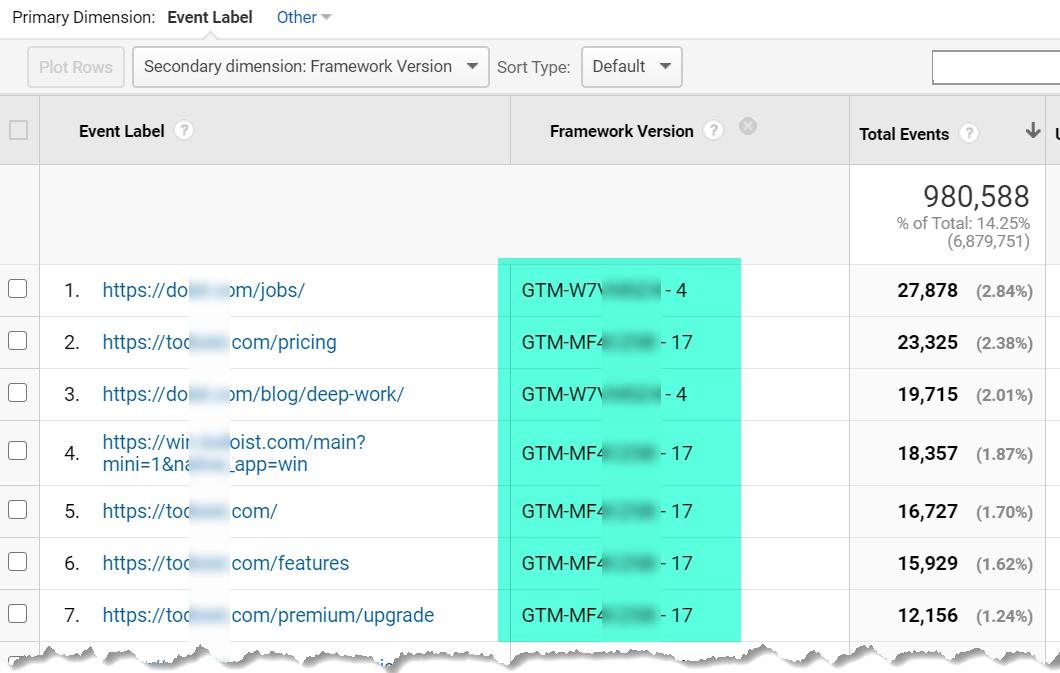Secondary Dimension in Google Analytics: Unlocking Advanced Metrics
Secondary Dimension in Google Analytics: Unlocking Advanced Metrics
Blog Article
Maximize Reporting Accuracy With Secondary Measurement in Google Analytics
Comprehending just how to make the most of reporting accuracy with second dimensions in Google Analytics can dramatically improve the depth of understandings stemmed from data analysis. By incorporating secondary measurements strategically, marketers can uncover surprise patterns and relationships that may not be immediately obvious when evaluating primary metrics alone. This nuanced technique enables a much more thorough understanding of user actions and campaign efficiency, leading the means for even more targeted and effective decision-making. The use of second dimensions holds the crucial to unlocking a wide range of important info that can transform the efficiency of digital advertising and marketing approaches.
Recognizing Second Measurements in Google Analytics
To improve information analysis and gain much deeper insights into customer behavior, comprehending additional measurements in Google Analytics is critical. Second dimensions allow customers to sector and additionally study data past the main dimension chosen. By incorporating second measurements, experts can fine-tune their reports to reveal even more thorough details regarding user communications on an internet site. While the key dimension might display the complete number of page sights, including a secondary dimension such as 'source/medium' can give insights into where the website traffic stemmed from. This additional layer of information makes it possible for marketing professionals to examine the efficiency of different marketing projects or channels in driving web traffic to the website.
Additionally, recognizing secondary dimensions is crucial for producing more customized reports tailored to particular organization goals. By choosing the appropriate mix of key and secondary dimensions, experts can reveal patterns, patterns, and correlations that may otherwise stay covert. This nuanced strategy to information evaluation equips businesses to make informed choices based upon a detailed understanding of user behavior across numerous dimensions.

Just How to Use Additional Measurements
When leveraging secondary dimensions in Google Analytics, the sensible application includes choosing specific data specifications to additional fine-tune insights past the main dimension's extent. To apply secondary dimensions successfully, start by accessing the record or dataset where you wish to dive much deeper right into the information. Keep in mind that additional dimensions aid supply context and granularity to your main measurement information, enabling you to remove even more actionable and significant insights from your Google Analytics records.
Leveraging Second Dimensions for Insights
Utilizing additional measurements in Google Analytics permits an extra extensive analysis of information, offering valuable insights past the main measurement's range. By leveraging second measurements, customers can delve deeper into the performance metrics of their internet site or app, discovering surprise patterns and patterns that may not be promptly apparent when special info only taking a look at primary measurements.
One key benefit of utilizing second dimensions is the capacity to segment and filter information more precisely. This can aid marketing professionals and experts much better comprehend the habits of certain individual sections, such as new site visitors versus returning site visitors, or web traffic originating from different geographical locations.
In addition, second dimensions allow users to contrast and contrast various information points within the same report, offering an extra all natural sight of performance (Secondary Dimension in Google Analytics). As an example, pairing the primary measurement of landing web pages with second measurements like devices or demographics can reveal which pages are most efficient in engaging customers on different devices or from various demographic groups.
Basically, leveraging secondary dimensions in Google Analytics empowers individuals to remove richer insights from their data, resulting in more educated decision-making and eventually, boosted efficiency.
Best Practices for Additional Measurements
When assessing information in Google Analytics, including additional measurements properly improves the deepness of insights obtained from the primary metrics. Selecting appropriate secondary dimensions aids in giving context and a more clear understanding of the data being analyzed.
Furthermore, it is recommended to restrict the number of additional dimensions utilized in a solitary report to stay clear of overwhelming the analysis with way too much information. Concentrating on a couple of vital second dimensions each time can bring about more concentrated and content actionable understandings. In addition, consider trying out different combinations of key and additional dimensions to uncover distinct trends and patterns that might not appear when considering the information alone.
Advanced Evaluation Strategies With Secondary Measurements
Checking out intricate data connections with the critical application of second dimensions can unveil nuanced understandings that raise the deepness of analysis in Google Analytics. By incorporating second dimensions with main information sets, advanced evaluation strategies can be utilized to draw out important details. One such method is cohort analysis, where additional dimensions enable the division of individuals right into groups sharing typical qualities. This technique allows a much deeper understanding of customer habits patterns gradually, helping in the recognition of patterns and the assessment of marketing projects' effectiveness.
Moreover, additional measurements can improve the evaluation of conversion paths by giving additional context. Understanding the numerous touchpoints a user communicates with before converting can be critical in maximizing the consumer trip - Secondary Dimension in Google Analytics. By utilizing additional measurements to explore specifics such as web traffic resources or gadgets utilized, marketers can tailor methods to target high-converting channels efficiently
Final Thought

To enhance information analysis and gain much deeper understandings into individual habits, recognizing second dimensions in Google Analytics is essential - Secondary Dimension in Google Analytics. Additional measurements permit users to section and better dissect data beyond the main measurement chosen. While the primary measurement might display the total number of page views, including a secondary measurement such as 'source/medium' can supply understandings right into where the website traffic originated from.When leveraging second dimensions in Google Analytics, the practical application includes selecting particular data parameters to more improve insights beyond the main dimension's extent. Remember that secondary dimensions help provide context and granularity to your main dimension data, enabling you to draw out more purposeful and workable insights from your Google Analytics reports
Report this page